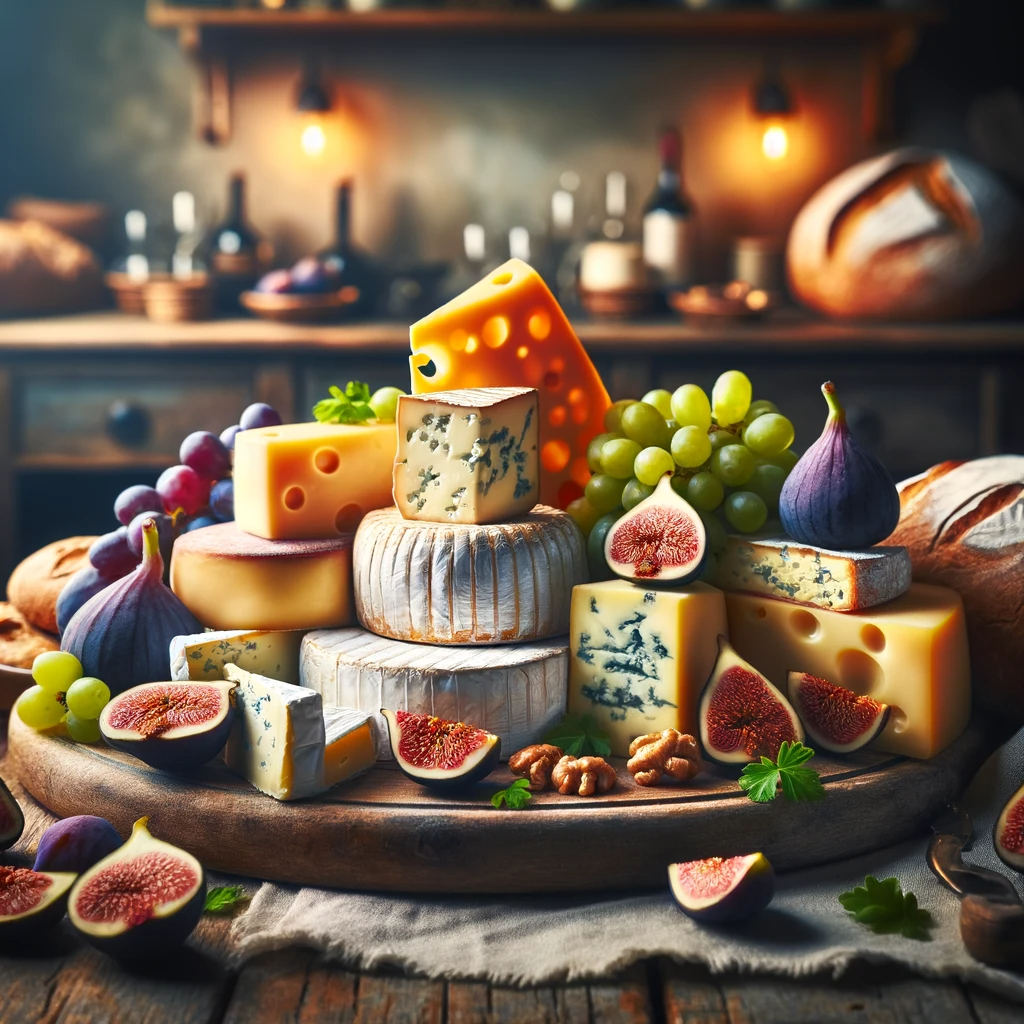Cheese, a beloved culinary delight, comes in various forms and flavors, each unique in its taste and texture. One of the most intriguing aspects of cheese production is the aging process. Aging, also known as ripening, plays a significant role in shaping the ingredients and taste of cheese. In this article, we will delve deep into the fascinating world of cheese aging, exploring how it transforms the ingredients and influences the final flavor.
The Aging Process – A Cheese Evolution
Aging cheese is akin to fine wine maturation; it allows flavors to develop, intensify, and mature over time. Here’s a closer look at how aging impacts cheese:
- Microbial Transformation:
- Cheese is teeming with various microorganisms like bacteria, molds, and yeast.
- During aging, these microorganisms interact with the cheese’s ingredients, breaking down complex compounds and releasing flavorful byproducts.
- Proteolysis:
- One crucial change during aging is the breakdown of proteins.
- Enzymes produced by microbes break down proteins into smaller peptides and amino acids, leading to a richer and more complex taste.
- Lipolysis:
- Fats in cheese also undergo transformation through aging.
- Enzymes break down fats into fatty acids, contributing to the cheese’s aroma and flavor profile.
- Texture Development:
- Aging can significantly affect the texture of cheese.
- Moisture loss during aging leads to denser, crumblier textures in aged cheeses like Parmesan, while fresher cheeses remain soft and creamy.
The Role of Ingredients in Aging
The ingredients used in cheese production vary depending on the type of cheese being made. However, some common ingredients include milk, rennet, salt, and various additives. Aging impacts each of these ingredients differently:
- Milk:
- The quality and composition of milk used are crucial for cheese flavor.
- Milk from different animals (cow, goat, sheep) imparts distinct flavors.
- The aging process intensifies the milk’s flavors, making it more pronounced in aged cheeses.
- Rennet:
- Rennet, an enzyme, is used to coagulate milk and form curds.
- The type and amount of rennet can affect the texture and flavor of the cheese.
- Over time, rennet-derived peptides contribute to the development of complex flavors.
- Salt:
- Salt is used to season the cheese and control the growth of microorganisms.
- It draws moisture out of the cheese during aging, leading to flavor concentration.
- Additives:
- Some cheeses incorporate additional ingredients like herbs, spices, or other flavorings.
- These additives interact with the cheese’s ingredients during aging, creating unique taste profiles.
The Impact on Taste – A Journey of Discovery
The aging process imparts a wide range of flavors to cheese, resulting in a diverse culinary experience:
- Young Cheeses:
- Fresh cheeses like mozzarella and ricotta are creamy, mild, and slightly tangy.
- Their flavors are more influenced by the primary ingredients and are less complex.
- Medium-Aged Cheeses:
- Cheeses like cheddar and Gouda develop a balanced flavor profile.
- The influence of microbial activity becomes more pronounced, leading to a richer taste.
- Aged Cheeses:
- Parmesan, Gruyère, and Roquefort are renowned for their intense and complex flavors.
- Proteolysis, lipolysis, and microbial transformation reach their peak, resulting in sharp, nutty, or pungent notes.
Conclusion – Savoring the Impact of Aging
Cheese, with its wide array of ingredients and aging techniques, offers a world of flavors waiting to be explored. The influence of aging on cheese ingredients and taste is a testament to the craftsmanship of cheese makers and the fascinating science behind this culinary art. Whether you prefer a young, mild cheese or an aged, robust one, the journey of cheese aging promises a delightful and ever-evolving gastronomic experience. So, the next time you savor a piece of cheese, remember that it is not just a product of ingredients but a result of time, patience, and the magic of microbial transformation.
